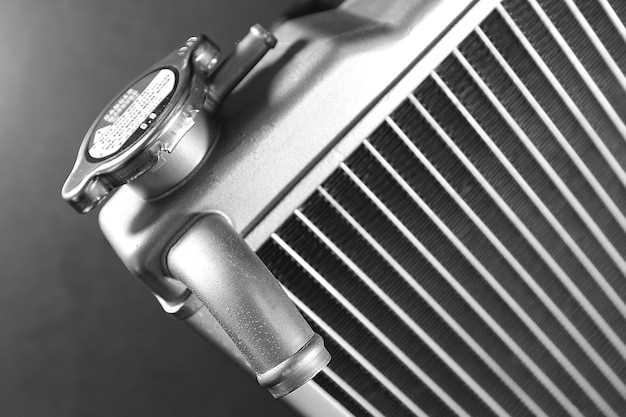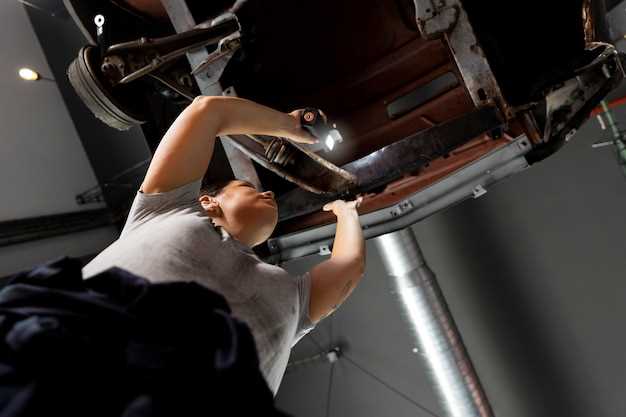
High-performance exhaust systems play a crucial role in enhancing the overall performance of a vehicle. By optimizing the flow of exhaust gases, these systems contribute significantly to improving torque and horsepower, leading to a more dynamic driving experience. The importance of a well-designed exhaust system extends beyond mere aesthetics; it involves intricate engineering that maximizes engine efficiency and sound quality.
One of the key benefits of upgrading to a high-performance exhaust system is improved tuning capabilities. A thoughtfully designed exhaust can create a more favorable backpressure dynamic, which enables the engine to breathe better and deliver power more effectively. This process not only enhances acceleration but also refines the vehicle’s throttle response, making driving more enjoyable and engaging.
Moreover, understanding the various components of high-performance exhaust systems is essential for anyone looking to maximize their vehicle’s potential. From headers to mufflers and catalytic converters, each part serves a specific function that contributes to the overall efficiency of the exhaust system. By investing in a high-quality exhaust setup, enthusiasts can unlock their vehicle’s true performance capabilities, resulting in enhanced torque delivery and a thrilling driving experience.
Maximizing Torque Output through Exhaust Design

Exhaust design plays a critical role in maximizing torque output in high-performance engines. The key to achieving optimal torque lies in the tuning of exhaust components, which must be carefully calibrated to match the engine’s characteristics. A well-designed exhaust system reduces back pressure and enhances the exit flow of exhaust gases, allowing the engine to operate more efficiently.
One important aspect of exhaust design is the diameter of the pipes. A larger diameter can facilitate better flow at high RPM, which is beneficial for power at high speeds, but may hinder low-end torque. Therefore, tuning the diameter appropriately ensures that the system can deliver the right balance between high-end power and low-end torque. For engines that require more torque at lower RPMs, a narrower pipe diameter is often preferred.
The use of headers can further influence torque output. Headers with equal-length design promote smoother exhaust flow and decrease turbulence, translating to improved torque generation. Additionally, incorporating features such as merging collectors helps in efficiently bundling exhaust flow, enhancing the overall performance of the system.
Another critical design element is the configuration of the exhaust muffler. A straight-through muffler can minimize back pressure and maintain exhaust velocity, thereby increasing torque. Conversely, a more restrictive muffler design may enhance sound but adversely affects torque output. Tuning muffler size and type according to the desired performance characteristics is essential.
Finally, the placement and design of catalytic converters should not be overlooked. While catalytic converters are necessary for emission control, their flow characteristics can influence torque. High-flow catalytic converters can reduce restrictions and improve exhaust flow, aiding in better torque delivery.
In conclusion, maximizing torque output through exhaust design involves a careful balance of various factors, including pipe diameter, header design, muffler configuration, and catalytic converter placement. By meticulously tuning these components, enthusiasts can achieve significant improvements in torque, enhancing overall engine performance.
Choosing the Right Materials for Performance Exhaust Systems

When it comes to enhancing vehicle performance, selecting the appropriate materials for exhaust systems plays a crucial role in achieving optimal torque and tuning. The choice of material affects the system’s weight, durability, and exhaust flow characteristics.
There are several key materials commonly used in the fabrication of performance exhaust systems:
- Stainless Steel: This is one of the most popular materials due to its corrosion resistance and durability. Grade 304 stainless steel provides a good balance of strength and weight, while Grade 321 is ideal for higher temperatures encountered in racing applications.
- Aluminized Steel: This is a cost-effective option that offers good resistance to rust, making it suitable for daily drivers. However, its lifespan is generally shorter compared to stainless steel, especially in high-performance settings.
- Titanium: Known for its lightweight and high strength, titanium is used in high-end performance exhaust systems. Its ability to withstand high temperatures and resistance to corrosion make it perfect for racing applications, where every ounce matters.
- Carbon Fiber: While typically used in high-performance racing, carbon fiber exhaust components provide a unique aesthetic and weight-reduction benefit. However, they can be more fragile, making them less suitable for street use.
Each material has its advantages and drawbacks, making it essential to consider the intended use of the vehicle:
- For Street Use: Stainless steel or aluminized steel provides a balance between durability and cost-effectiveness.
- For Performance Tuning: If your goal is to increase horsepower and torque, stainless steel or titanium should be prioritized for their superior flow capabilities.
- For Racing: Titanium and carbon fiber offer the best weight reduction and performance benefits, but at a higher price point.
Ultimately, understanding the specific requirements of your vehicle and your performance objectives will guide you in choosing the right materials for your performance exhaust system. This strategic decision will influence not only the power output but also the overall driving experience.
Techniques for Fine-Tuning Exhaust Systems to Enhance Performance
Fine-tuning exhaust systems is crucial for maximizing vehicle performance, particularly in enhancing torque and overall engine efficiency. One effective technique involves adjusting the length and diameter of exhaust pipes. By optimizing these dimensions, you can create better exhaust flow, reducing back pressure and allowing the engine to expel gases more efficiently.
Another important aspect is the use of high-quality materials. Upgrading to lightweight and durable materials, such as stainless steel or titanium, can significantly decrease weight while increasing resistance to corrosion. This not only improves performance but also extends the lifespan of the exhaust system, contributing to consistent torque generation over time.
Integrating high-performance mufflers can also enhance sound quality without sacrificing efficiency. Mufflers designed for performance often utilize straight-through designs that minimize obstruction, promoting optimal exhaust flow and increasing torque. Careful selection of mufflers that match your specific engine setup is essential for achieving the desired sound and performance characteristics.
Optimal placement of exhaust system components is vital for fine-tuning. Positioning the headers correctly ensures that each cylinder effectively contributes to exhaust scavenging, improving torque during acceleration. This technique requires careful measurement and alignment to enhance the interaction between the exhaust gases and the engine.
Tuning the exhaust system involves adjusting factors such as back pressure and exhaust velocity. Utilizing tools like dynamometers for performance testing can help identify the ideal settings for your specific vehicle. This data-driven approach allows for precise adjustments that can lead to significant improvements in torque and overall power delivery.
Finally, regular maintenance of the exhaust system is crucial for sustaining optimal performance. Checking for leaks and ensuring that all components are securely installed can prevent power losses and maintain the integrity of torque output. By dedicating time to fine-tuning and maintaining the exhaust system, enthusiasts can unlock the full potential of their vehicles.




